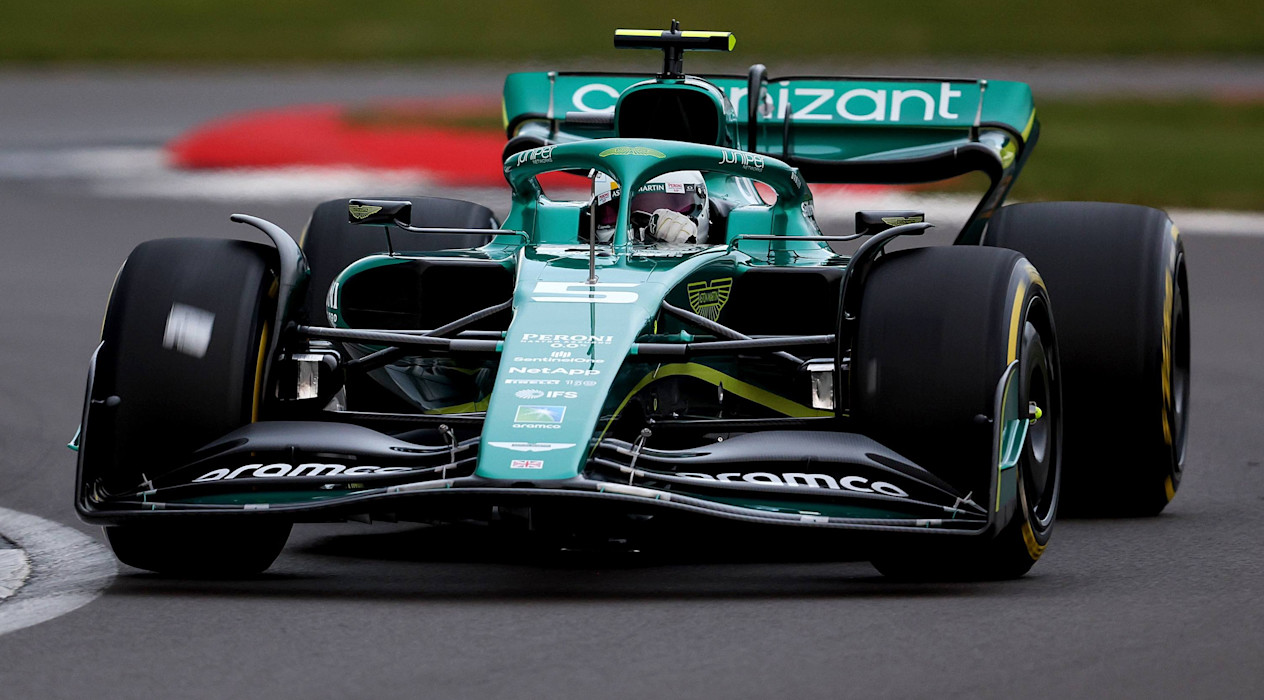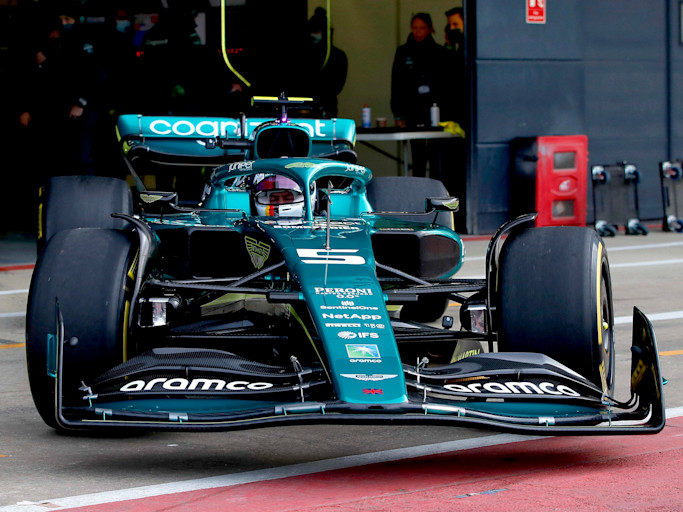
With reams of data and insight to come in pre-season testing next week, we're bringing you the lowdown into the six key areas of Formula One's technical revolution.
Above all else, the new generation of Formula One cars have been designed to target better wheel-to-wheel battling and improve the spectacle for fans.
Earlier this year, F1 revealed figures that suggested it has tackled the problem head-on.
The 2021 cars are slated to lose 35% of their downforce when roughly within the 20 metres between the nose of the car in front to the nose of the car in pursuit.
The 2022 car, which has been designed around the aerodynamic principle of ground effect, is said to reduce the downforce loss from 35% to 4%.
F1 has targeted this phenomenon specifically because, in the past, a loss of downforce often caused drivers to back off to conserve their tyres, or rely on a huge pace differential to make a move.
AMR22: Tech insights
The new era of Formula One has arrived. Designed to produce better racing, and heralding the return of ground effect, the AMR22 represents F1's biggest design revolution in decades.

By removing the complex aerodynamic devices, most notably seen in the bargeboard areas and front wings of recent F1 car designs, the disturbed air left in the wake of the car cutting through the air in front is reduced, in turn reducing downforce loss for the pursuer.
According to Aston Martin Aramco Cognizant Formula One™ Team’s Chief Technical Officer, Andrew Green, early signs suggest there is a "completely different flow field" that "should have an effect".
But it's important to recognise that these changes will not necessarily herald an immediate overtaking revolution.

I think we'll start to see everybody close up relatively quickly compared to previous years.
For a start, F1 is continuing to use DRS, wanting to evaluate the system's impact in the first year of new regulations.
"I think the DRS itself is going to be just as powerful," says Andrew. "But I think it'll be up to the FIA to look at the track layouts and see whether they need to modify the DRS zones accordingly. I suspect they will do.
"If it plays the way that they think it's going to play, with the cars being able to follow more closely, they shouldn't need as much DRS assistance.
"I think we might see the DRS zones reduced over time and some of them may even be removed. I think that'd be a good thing."
Sights and sounds of an F1 2022 car
Turn up the volume and immerse yourself in the sights and sounds of a new F1 era, as the Aston Martin Aramco Cognizant Formula One™ Team AMR22 hits the track at Silverstone.

So, DRS is likely to remain a factor early on, especially as teams get to grips with their new car designs in the early phases of the 2022 season.
But asked if fans can be cautiously optimistic that overtaking will be improved this year, Andrew says: "I think ultimately, yes.
"To start the season, we may still find that there's quite a big spread in the grid as everyone finds their feet with the regulations, understanding the directions that other teams have taken.
"There are going to be teams that have found a rich vein of performance in the direction they've taken, and there will be other teams that have not quite got there in the early stages.
"It will be a few races before we start to see how the pack plays out. Then, I think we'll start to see everybody close up relatively quickly compared to previous years."
Access I / AM to get closer to the team.
































